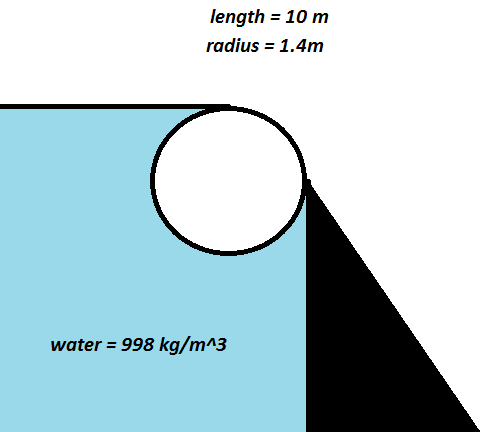So I am studying for a final and can't seem to solve this. There is a log floating in water and I need to find its weight. The question I have is what parts of the volume of the log count when summing the forces in the Y axis.

What i have now for AREA alone is $r^2 - .25\pi r^2$ pushes down and $.5\pi r^2 + r^2$ pushes up. however this does not take into account the air above the log in the upper right quadrant. is the force pushing up taking into account the half circle below the water and also the $2r^2$ above the horizontal of the log?
The actual question for this image says: A log is stuck against a dam as shown in the diagram. given the radius of the log of 1.4 m and the length of the log into the page, 10 m find the weight of the log in kN.

 ,
,